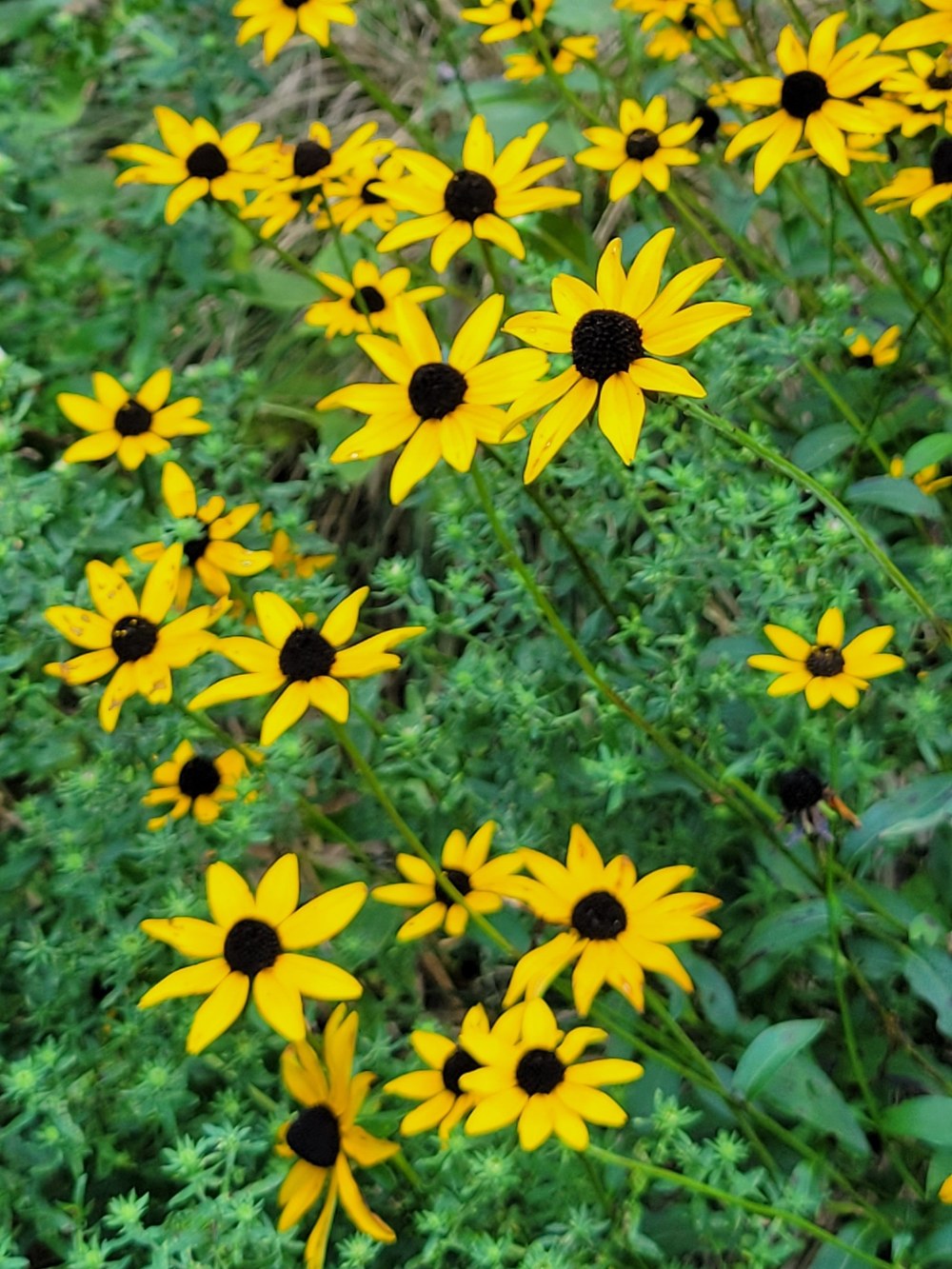Posted: October 8, 2021
Gardening involves things that can be done routinely at the same time every year. Our focus is on Native Plant Gardening and will include some general gardening as well. Though annual weather may influence timing of these tasks, these are the things to check off your list now that October has arrived.

Black-eyed Susans (Rudbeckias) provide a burst of bright Fall color. Photo by Pam Hall
Even though we think of the change of seasons as an end to the season,
Autumn is a busy time of the year - both as a wrap up for the summer and as preparation for the next year. Planting in the Fall gives you a big jump on spring gardening.
Fall brings the perfect opportunity to plant.
Whether supplementing an existing planting or installing an entire garden, when the soil is 50 degrees or warmer and air temperatures are above 55 degrees, those are perfect conditions for root establishment. Mulching Fall-planted perennials will keep the soil warmer longer allowing root growth to continue. If frost is forecast, cover plants overnight with a sheet. Read more about Autumn planting: Is Fall for Planting?
While this is an excellent time to plant, beware of hungry deer.
In the Mid-Atlantic white-tailed deer pressure ramps up as temperatures drop, as there is less food available to them. Check out the list of deer tolerant plants for Pennsylvania and focus on planting these. If you decide to install a fence, make sure it is at least 8 feet tall.
Take stock of at the end of summer when the progress of the last season is easy to observe.
While plants are visible, mark your perennials with permanent tags or create a map showing their location so you will know where and what where they are when they die off at the end of the season. This will also prevent digging up something you intended to keep. Determine what plants you want to keep.
In October, when most perennials are brown and dead,
late-blooming Black-Eyed Susans (Rudbeckias) will brighten your landscaping. Rudbeckia fulgida var fulgida blooms longer than most rudbeckias. I have included a photo with this month's report. This would be a great plant to add where you would like a long-blooming perennial to brighten late season gardens. Read more about this Black-eyed Susan.
If you do not have enough Fall interest, add asters and goldenrod.
They are the grand finale to the perennial garden, displaying vibrant fall colors in shades of blue, purple, and bright yellow. They are extremely valuable to pollinators because they are the last feeding opportunities for bees, butterflies, and other pollinators. Information about asters and goldenrods is in this article.
There are perennials that are great self-seeders.
For example, Eastern Red Columbine (Aquilegia canadensis) loves to roam and spread its seedlings to places far away from the parent plant. Baby plants can help fill your garden. There is nothing gardeners like more than to share plants, or to receive a gift from your garden. Dig up and share plants or move them to a better place in your garden.
October is the perfect time to dig up and relocate any plants,
especially those plants that have been visually bugging you all summer. Plants moved in the Fall will likely experience less transplant shock. Make sure you mulch them--fallen leaves would work well.
Fallen leaves.
As the leaves are changing color and floating to the ground, they will form a layer on the garden and lawn. If they are thick on your lawn, blow them back into the bed to avoid smothering the grass. Leaves will make wonderful mulch. Remember there are pollinators overwintering in the leaves.
Clean and oil your garden tools for winter storage.
If you have cut any diseased plants, sterilize tools with alcohol or disinfecting wipes. Next place sand in a large bucket and some oil, and then slide your garden tools in and out of the sand. This will do an excellent job of cleaning them, as well as applying a light coat of oil to prevent rusting.
Remove all diseased plants.
Phlox and bee balm (Monarda) are likely to have powdery mildew. Put them in a bag or other container and dispose of them in the trash. The fungus can survive over winter. Never put the diseased plants in compost.
~ Pamela Hall, Master Gardener, Lancaster County

